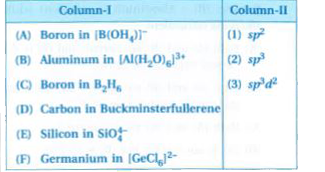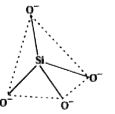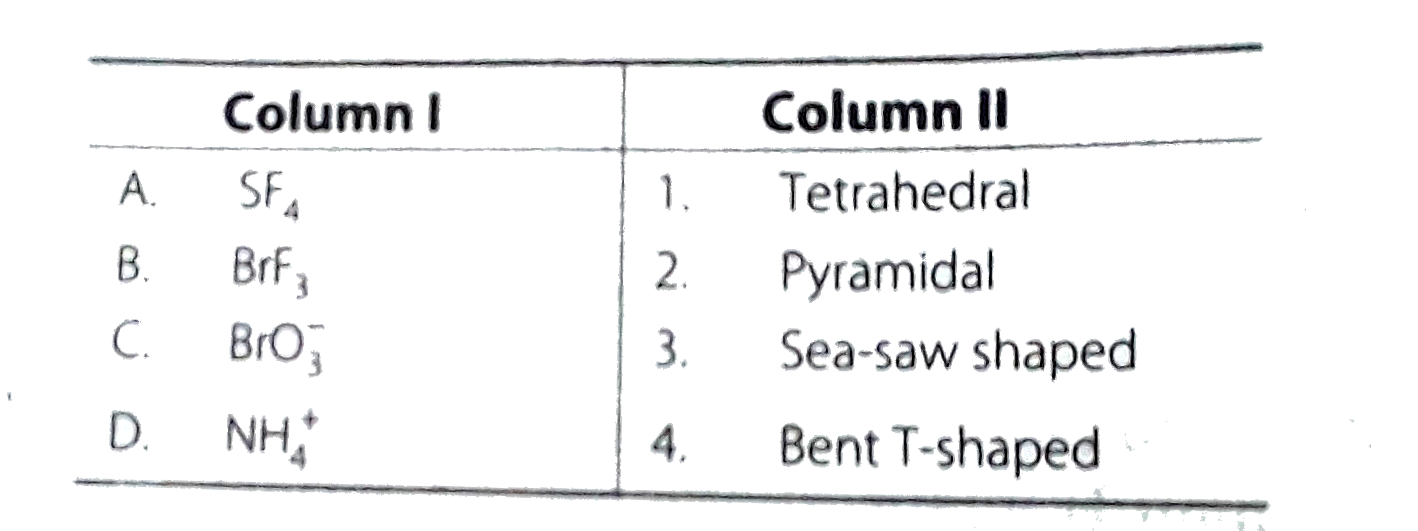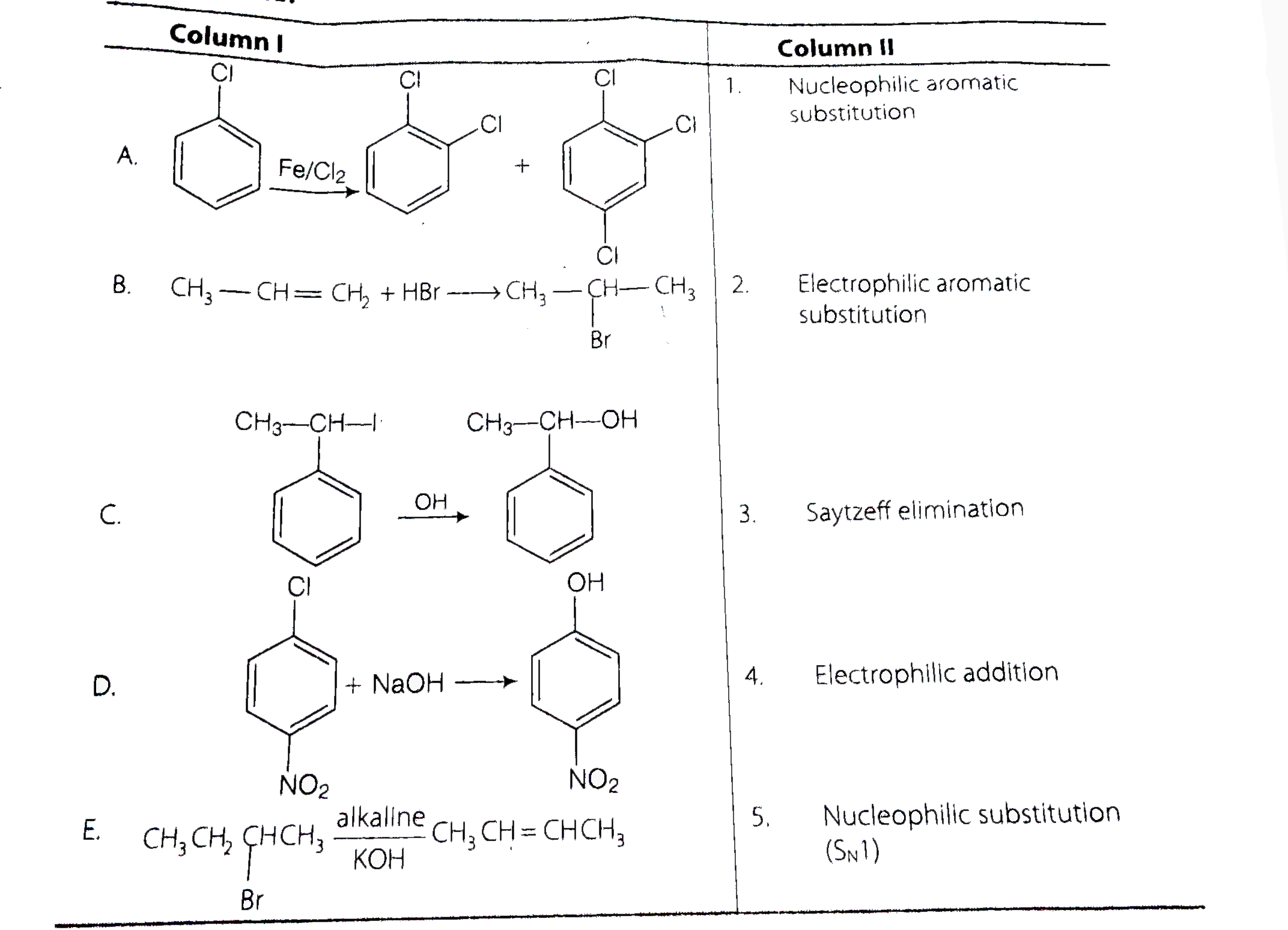Match the species given in Column-I with the hybridizations given in Column-II.

Text Solution
The correct Answer is:A-2; B-3 ; C-2 ; D-1 ; E-2 ; F-3
(A) Boron is central atom and is surrounded by 4 bond pairs only.
(B) In [Al(H2O)6]3+ coordination number of Al is 6 and geometry is octahedral.
(C) In B2H6, each B atom uses sp3 hybrid orbitals for bonding. Out of the four, sp3 hybrids on each B atom, one is without an electron.
(D) All the carbon atoms are equal and they undergo sp2 hybridization. Each carbon atom forms three sigma bonds with other three carbon atoms.
(E) The basic structural unit of silicates is SiO4−4 in which silicon atom is bonded to four oxygen atoms in tetrahedron fashion.

(F) In [GeCl6]2− , Ge has coordination number 6 and it has octahedral geometry and central atom Ge is sp3d2 hybridized.
|
Updated on:21/07/2023
Topper's Solved these Questions
- BOOK - KUMAR PRAKASHANCHAPTER - THE P-BLOCK ELEMENTSEXERCISE - SECTION-D NCERT EXEMPLAR SOLUTION (MCQs) ASSERTION & REASON2videos
THE P-BLOCK ELEMENTS
- BOOK - KUMAR PRAKASHANCHAPTER - THE P-BLOCK ELEMENTSEXERCISE - SECTION-D NCERT EXEMPLAR SOLUTION (MCQs) LONG ANSWER25videos
THE P-BLOCK ELEMENTS
- BOOK - KUMAR PRAKASHANCHAPTER - THE P-BLOCK ELEMENTSEXERCISE - SECTION-D NCERT EXEMPLAR SOLUTION (MCQs) Short Answer27videos
THE P-BLOCK ELEMENTS
- BOOK - KUMAR PRAKASHANCHAPTER - STRUCTURE OF ATOMEXERCISE - QUESTINS PAPER FROM MODULE (SECTION -D)2videos
STRUCTURE OF ATOM
- BOOK - KUMAR PRAKASHANCHAPTER - THE s-BLOCK ELEMENTSEXERCISE - Section-D NCERT Exemplar Solution (Long Answer Type)8videos
THE s-BLOCK ELEMENTS
Similar Questions
Knowledge Check
- Question 1 - Select One
Match the species given in Column I with the shape given in Column II and mark the correct option.
 AABCD3214BABCD3421CABCD1234DABCD1432
AABCD3214BABCD3421CABCD1234DABCD1432
Match the species given in Column I with the shape given in Column II and mark the correct option.
 View Solution
View SolutionMatch the statements given in Column I with the oxidation states given in Column II.
 View Solution
View SolutionMatch the reactions given in Column I with the types of reactions given in Column II.
 View Solution
View SolutionMatch the reactions given in Column I with the type of reactions given in Column II
 View Solution
View SolutionMatch the statements given in Column I with the oxidation states given in Column II.
 View Solution
View SolutionMatch the reactions given in Column I with the types of reactions given in Column II.
 View Solution
View SolutionMatch the species given in column I with prperties given in Column II.
 View Solution
View Solution


